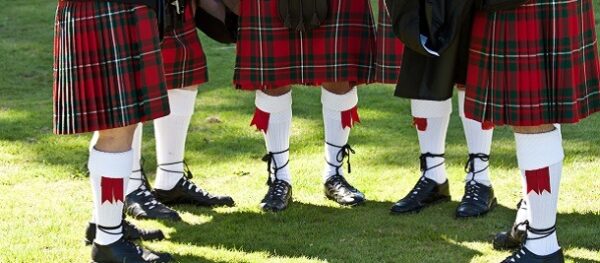It is thought that the Highland Games originated from ancient Scottish clans competing against each other in various sporting events, with chiefs selecting their strongest, fastest, fittest and most entertaining men to represent the clan.
Similar sporting contests were also staged at military meets, where the warriors of different clans could test their physical prowess. It was at one of these military musters in 1574 that the ‘tossing of ye barr’ (the caber) first appeared on record. Interestingly, these original competitions did not call simply for feats of strength: poets, bards and musicians also performed and held competitions.
The establishment of Highland Games as annual events dates from the 1820s and was a part of the romanticization of Highland culture that was rife amongst the British ruling class at the time.
The summer Highland Games season runs from May to the end of September, with events taking place all over the world. It is an opportunity to celebrate fascinating Scottish history, and if you feel that your Scots knowledge needs a little brushing up, then fear not!
Read on to find out how to toss ‘ye barr’ and where the bagpipes really come from.
1. The Tossing of the Caber (from the Gaelic for pole) is a truly Scottish sport which has been practised since the very early Highland Games in the 16th century. It was devised by Scottish woodsmen in their leisure time.
Contrary to general opinion, ‘*caber tossers’ *do not try to throw the caber as far as they can but to toss it so that it turns end over end and lands in the ‘12 o’clock’ position. Sometimes the long and extremely heavy caber proves particularly reluctant to turn, so pieces can be sawn off the end until the competitors are finally able to toss it.
2. In addition to the caber, other items may be thrown at Highland Games. In the Sheaf Toss, a bundle of straw weighing 20 pounds for men or 10 pounds for women is wrapped in a burlap bag and tossed vertically with a pitchfork over a raised bar.
There is also the Stone Put, which is similar to the modern-day shot put. In this event alarge stone of variable weight is thrown as far as possible.
Other events include the Weight Throw, in which metal weights attached to chains are thrown as far as possible using any technique but with only one hand, and the Weight over the bar, which sees athletes attempt to toss a 4 stone weight with an attached handle over a horizontal bar using only one hand.
3. The Ceilidh is an informal party where any number of people can gather to dance and hear the ceilidh band play. The name itself comes from the Gaelic for ‘to visit’. The most popular ceilidh dances include The Dashing White Sergeant, The Military Twostep and Strip the Willow. Don’t worry about knowing your steps before attending a ceilidh as there will usually be a ‘caller’ to explain each dance before it begins.
4. The Braemar Gathering, held in September, is the largest Highland Games event and is attended annually by the British Royal Family. Its origins are also royal: the Contests of Strength were introduced by Malcolm Canmore in 1040 as a means of selecting the most able men for soldiers and couriers.
5. Highland Games take place across the UK, as well as in Switzerland, Germany, Canada, Australia and the USA. At the Bellingham Highlands Games in Ferndale, Washington, you can hunt the ‘Nessie eggs’, or mini watermelons which are hidden around the park.
6. Not only are Contests of Strength played, but the world record for the biggest bowl of porridge was set at the Cupar Highland Games in Fife in 2010. The huge breakfast of 690 litres of porridge could have fed 2,000 people and was more than double the previous record.
7. The Highland Games held each June at Ceres in Fife are the oldest free games in Scotland. They began under a Charter awarded by Robert the Bruce in recognition of the villagers’ support at the Battle of Bannockburn in 1314.
8. Many people participate in ‘haggis hurling’, in which a haggis is thrown. The contestant who throws their haggis the furthest wins.
9. Bagpipes can be found at all Highland Games, and yet they did not originate in Scotland. In fact, they probably had their beginnings in the ancient Middle East, where a blowstick would be attached to a bag, and a simple chanter and drone were played together. The oldest sculpture of bagpipes was found on a Hittite slab at Euyuk in the Middle East and was dated to 1000 BC. The bagpipes are even mentioned in the Bible’s Book of Daniel, where there are references by ancient Greek sources to bagpipes made of dog skin with bone pipes being played by the inhabitants of Thebes.
It is thought that the bagpipes found their way to Scotland around 2,000 years ago, when the Romans occupied England and made several attempts at conquering Scotland.
Do you have any more interesting points to add to our Highland Games Fact File?



